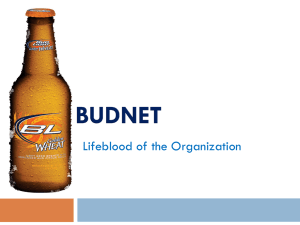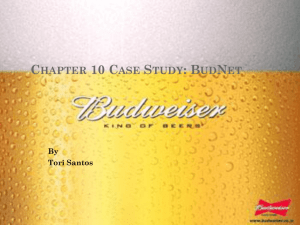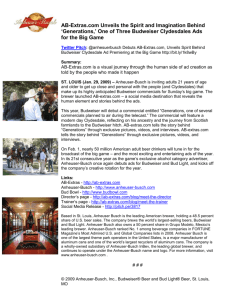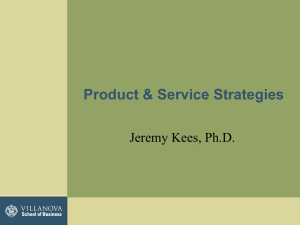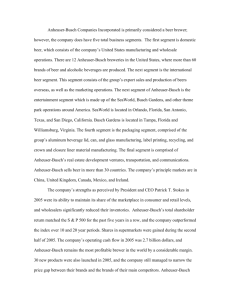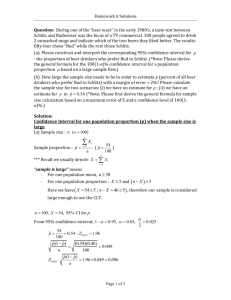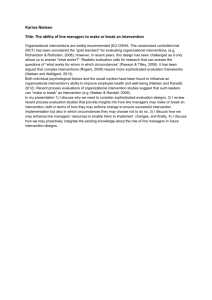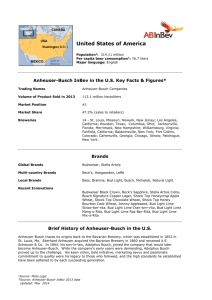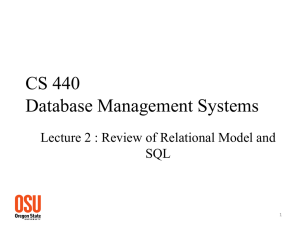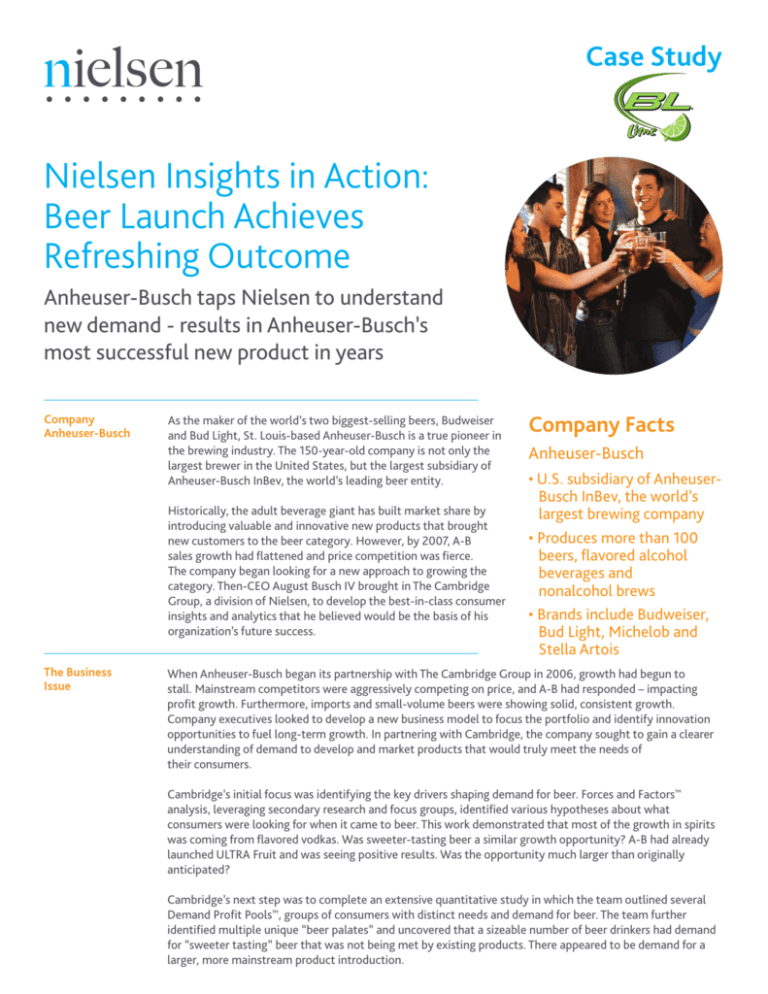
Case Study
Nielsen Insights in Action:
Beer Launch Achieves
Refreshing Outcome
Anheuser-Busch taps Nielsen to understand
new demand - results in Anheuser-Busch’s
most successful new product in years
Company
Anheuser-Busch
As the maker of the world’s two biggest-selling beers, Budweiser
and Bud Light, St. Louis-based Anheuser-Busch is a true pioneer in
the brewing industry. The 150-year-old company is not only the
largest brewer in the United States, but the largest subsidiary of
Anheuser-Busch InBev, the world’s leading beer entity.
Historically, the adult beverage giant has built market share by
introducing valuable and innovative new products that brought
new customers to the beer category. However, by 2007, A-B
sales growth had flattened and price competition was fierce.
The company began looking for a new approach to growing the
category. Then-CEO August Busch IV brought in The Cambridge
Group, a division of Nielsen, to develop the best-in-class consumer
insights and analytics that he believed would be the basis of his
organization’s future success.
The Business
Issue
Company Facts
Anheuser-Busch
• U.S. subsidiary of Anheuser-
Busch InBev, the world’s
largest brewing company
• Produces more than 100 beers, flavored alcohol
beverages and
nonalcohol brews
• Brands include Budweiser, Bud Light, Michelob and Stella Artois
When Anheuser-Busch began its partnership with The Cambridge Group in 2006, growth had begun to
stall. Mainstream competitors were aggressively competing on price, and A-B had responded – impacting
profit growth. Furthermore, imports and small-volume beers were showing solid, consistent growth.
Company executives looked to develop a new business model to focus the portfolio and identify innovation
opportunities to fuel long-term growth. In partnering with Cambridge, the company sought to gain a clearer
understanding of demand to develop and market products that would truly meet the needs of
their consumers.
Cambridge’s initial focus was identifying the key drivers shaping demand for beer. Forces and Factors™
analysis, leveraging secondary research and focus groups, identified various hypotheses about what
consumers were looking for when it came to beer. This work demonstrated that most of the growth in spirits
was coming from flavored vodkas. Was sweeter-tasting beer a similar growth opportunity? A-B had already
launched ULTRA Fruit and was seeing positive results. Was the opportunity much larger than originally
anticipated?
Cambridge’s next step was to complete an extensive quantitative study in which the team outlined several
Demand Profit Pools™, groups of consumers with distinct needs and demand for beer. The team further
identified multiple unique “beer palates” and uncovered that a sizeable number of beer drinkers had demand
for “sweeter tasting” beer that was not being met by existing products. There appeared to be demand for a
larger, more mainstream product introduction.
Nielsen Insights in Action:
New Markets, Beefed Up Sales
The Solution
Case Study
“
Drawing on Cambridge’s Palate Map™ analysis, the brew masters
at Anheuser-Busch created a novel formula that – with a splash
of natural lime – offered a refreshing, citrus-infused alternative
to traditional light beers. A competitor had recently introduced
a similar product, but instead used artificial lime flavoring and a
pinch of salt. Anheuser-Busch believed its unique brew would win
over beer drinkers.
Field taste tests convinced Anheuser-Busch that it had a winner
on its hands. Consumers preferred its lighter, more natural
sweetness to the competitor’s lime-salt combination. While
the new Bud Light product proved enormously popular during
initial product testing, A-B wanted to confirm the economics
to justify the investment of a major new product launch.
Cambridge leveraged its proprietary Customer Demand Analysis
to demonstrate that the new beer was likely to not only increase
consumption among light beer drinkers, but also bring new
consumers to the category. Also, the product could be sold at
a price premium, thereby generating enhanced profit margins.
More importantly, the work also showed that the new beer would
positively impact its iconic Bud Light brand, not detract from it.
“Even the loudest
naysayers were
convinced once the
data came back. Not
only would Bud Light
Lime add incremental
volume, it would
broaden and strengthen
the perception of
Bud Light.”
”
Dave Peacock,
president of Anheuser-Busch
“Even the loudest naysayers were convinced once the data came back,” said Dave Peacock, president of
Anheuser-Busch. “Not only would Bud Light Lime add incremental volume, it would broaden and strengthen
the perception of Bud Light.”
A Win-win
Outcome
From the beginning, the introduction of Bud Light Lime was a tremendous success. Launched in May of
2008, the product exceeded all expectations, generating strong trial, repeat and volumes. Additionally,
cannibalization of traditional Bud Light was less than expected. More welcome news: roughly 8 percent of
Bud Light Lime drinkers turned out to be non-beer drinkers, suggesting that the product was able to bring a
more ethnically diverse young adult demographic to the category, as Cambridge’s initial research
had predicted.
Just as importantly, consumers were impressed by the unique appeal of the beverage and demonstrated a
willingness to pay slightly more per unit, as was forecasted. “Not only did Bud Light Lime create a unique
product for a new pool of demand – as well as broaden the perception of the brand – it also proved to be
a bigger financial success than we ever imagined,” Peacock said. Bud Light Lime was ultimately ranked the
number-one product launch in the consumer goods industry for 2008.
To learn more about how Nielsen can help with your promotional
strategies, contact sales.us@nielsen.com or visit www.nielsen.com
Copyright © 2011 Nielsen. All rights reserved. Printed in the USA. Nielsen and the Nielsen
logo are trademarks or registered trademarks of CZT/ACN Trademarks, LLC. 10/1686

